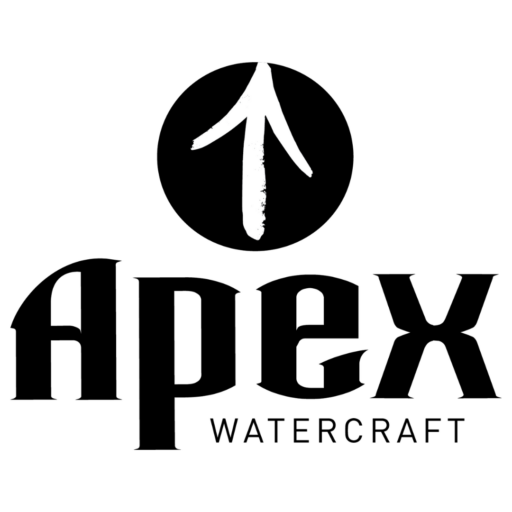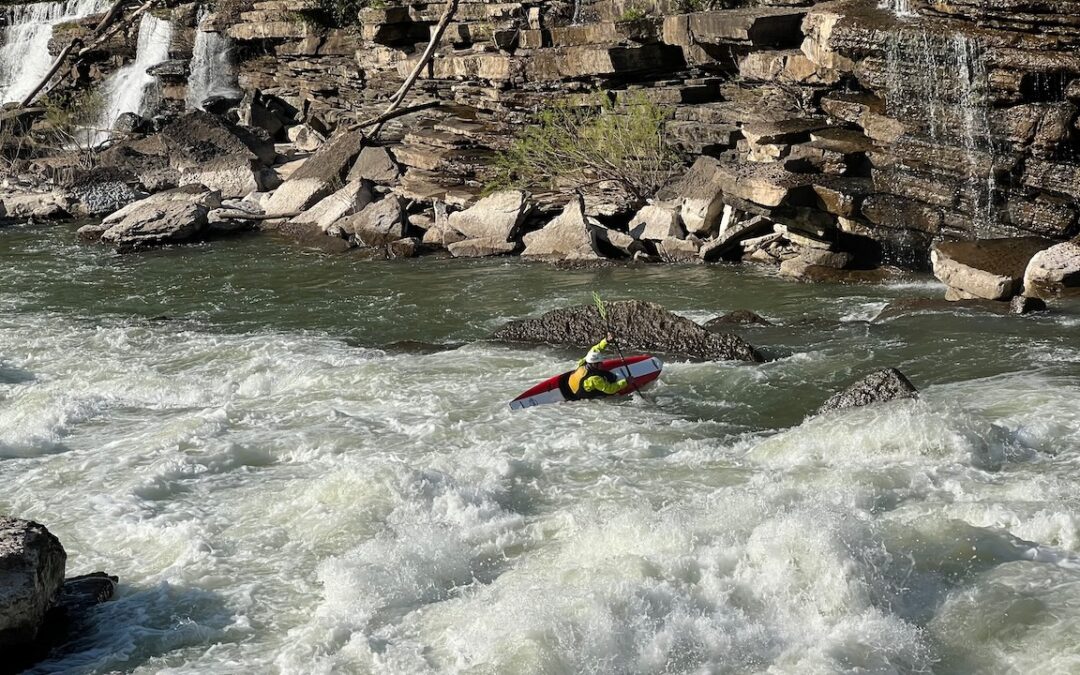The Draw Stroke
Controlling your turns

The next stroke we are going to learn is a game changer. The Draw Stroke. What is special about the draw stroke (done properly, of course) is that it turns your paddle into a keel and a sail for the kayak. Without the draw stroke you can only pull yourself forwards, push backwards, spin, and go. With the draw stroke, you can carry your speed around turns, harness the current differentials in the river, and control the boat much more effectively.
The concept: Your whitewater kayak doesn’t carve a turn very well. It is, by design, made to slide on turns, and be very maneuverable. The shorter the kayak the less it carves and the more it slides. Imagine having a race car out on a frozen lake and trying to run through a course. It would just slide around, and you would not make any good turns. This is the whitewater kayak without a draw stroke. Now, what a kayak is missing that would allow it to carve around a turn and not slide, is a keel. A keel, like on a sailboat, prevents the boat from sliding sideways. The draw strokes job is to mimic a keel, preventing the boat from sliding out to the outside of the turn.
Where does a keel go on a boat? Unfortunately for kayakers, it has been taught for decades to put your draw stroke in at the bow of the boat and use it to turn the kayak. If you were to put a keel on a sailboat at the bow, the sail boat would not sail. It would just turn into the wind and sit there. The same is true for a kayak, if the draw stroke goes in at the bow the stern just slides out and you stop, just like if you didn’t put a stroke in at all. The Draw stroke needs to keep the stern from sliding out, so it goes just behind your center of buoyancy, or your butt.
Head: Look to your target on the inside of the turn.
Boat- Keep your boat flat
Body: Lead the turn with your body (face the inside of the turn) and keep it over the boat.
Paddle: Vertical paddle, power face towards the boat, parallel to the boat, and blade behind the butt.
Here is how you do that:
The Draw:
- Take your paddle and hold it in your right hand only.
- Put the paddle vertically in the water next to your butt on the right side.
- Now, turn the face of the blade so the power face is facing your kayak, making it so the paddle would slice or feather along the length of the boat.
- Now, turn your body to face the paddle shaft, and then reach your left hand over and grab the paddle. You are now in the “normal draw”
- Move the paddle further back to your stern- this is a stern draw, normal face.
- Move the paddle to the right knee- this is a bow draw- normal face
- Now rotate the leading edge of the paddle (the edge towards your bow) towards the boat by 30 degrees. This is a closed faced bow draw.
- Rotate the leading edge away from the boat, this is an open face bow draw.
- OK- I think you have it- Bow, normal, stern draw and open, closed, or normal face
Let’s try it in action.
Drill 1: Paddle forwards and get some good speed. Get the boat spinning to the right and immediately, before you let the boat spin out and slide, throw your normal face stern draw in the water.
- If you hit it right, you’ll carve a long, steady turn and not slide a bit.
- If you put the draw in too far forwards (because that is your habit) the boat will spin out quickly and stop.
- If you put the draw too far back and pull too hard on it towards the stern, you will overpower the spin momentum and turn the boat to the left.
Drill 2: Do the same thing, but use a slightly (10-20 degrees) closed face stern draw. You’ll notice that you glide further and the boat doesn’t slow down as fast.
Why? Because the paddle is sailing you forwards as well as keeping you from sliding. How does the paddle act as a sail? When you are turning, your kayak is trying to slide to the outside of the turn. Your draw stroke has blade pressure on it, which is what keeps you from sliding, when you have your paddle “closed faced” the blade pressure propels your boat forwards, like a sail. If you were to have an open face blade, the sail would slow you down, instead of speeding you up.
Drill 3: Before and After Test: You’ll need a partner for this test. The drill is to paddle up to your partner, around the stern of their boat and back to where you came from. The goal is to use the minimum number of strokes from the time your body passes their body going towards them, to the time your body passes theirs coming back away from them. The international average for this drill is 5 strokes. Meaning, when I do this test with my students (which I do almost every time I teach a clinic) they range from 1-10 strokes and 5 is almost always the number. Those who do it in 1 stroke have taken my strokes and concepts classes before and are getting quite proficient. Not only can you do it in one stroke, but you can come out of the turn with more speed with one proper stroke than the person who does 5 hard strokes. This is a great example of the power of efficient paddling. The reason that one stroke can be faster and go as far as 5 strokes is because the person doing 5 strokes is letting their boat slide around the corner, and the person doing it in one stroke is carving the turn and carrying their speed around the turn using a proper draw stroke. If you can’t easily do it in one stroke and come out of the turn with speed, you don’t have a functional draw stroke yet, and your are still paddling with a very limited repertoire of strokes, specifically missing the draw stroke.
Your Steering Wheel for your kayak- the position of the draw stroke:
The exact position and pressure you put on the draw stroke (how hard your pull it towards the boat) determines how you are affecting the turn with it. If you want to the boat to not turn as quickly, you move the draw stroke back towards the stern further, if you want the boat to turn faster you move the draw stroke forwards. Remember, however if the draw stroke gets in front of your butt, it your stern will slide out and you’ll lose your momentum.
NEW RULE FOR TURNS: “ALWAYS CONTROL EACH TURN WITH THE PADDLE ON THE INSIDE OF THE TURN, AND USE A DRAW STROKE.”
We now have 4 rules for every turn:
- Look at your target
- Lead the turn with your body
- Control the Turn with the paddle blade on the inside of the turn.
- Use a draw stroke to control the turn.
Before I give you a mental picture of what it looks like to follow the four rules in your paddling, we should learn some more strokes that use spin-momentum and draw strokes in them. We are getting into a new realm of paddle strokes now- compound strokes.

